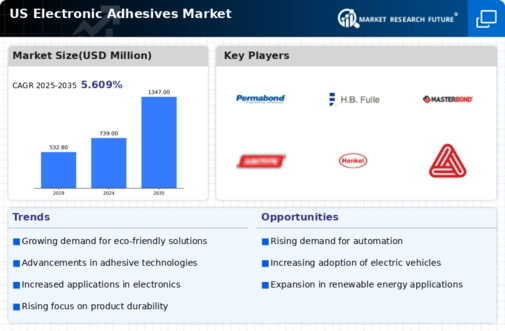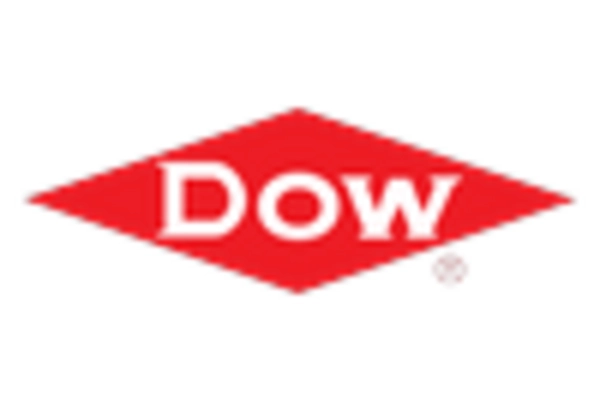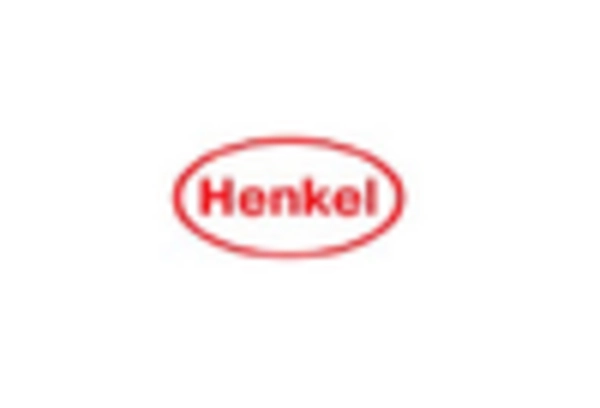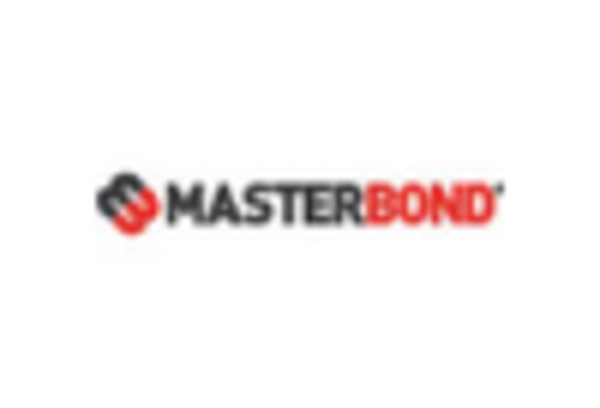The electronic adhesives market in the US is characterized by a dynamic competitive landscape, driven by innovation, technological advancements, and increasing demand across various sectors, including automotive, electronics, and renewable energy. Key players such as Henkel (DE), 3M (US), and Dow (US) are strategically positioned to leverage their extensive product portfolios and R&D capabilities. Henkel (DE) focuses on sustainable solutions, emphasizing eco-friendly formulations, while 3M (US) is known for its robust innovation pipeline, particularly in high-performance adhesives. Dow (US) is enhancing its market presence through strategic partnerships and collaborations, which collectively shape a competitive environment that is increasingly focused on sustainability and technological integration.
In terms of business tactics, companies are localizing manufacturing to reduce lead times and optimize supply chains, which is crucial in a market that is moderately fragmented. The competitive structure is influenced by the collective actions of these key players, who are not only competing on product quality but also on operational efficiency and customer service. This localized approach allows for better responsiveness to market demands and enhances overall competitiveness.
In October 2025, 3M (US) announced a significant investment in a new manufacturing facility dedicated to electronic adhesives in Texas. This move is expected to increase production capacity by 30%, allowing the company to meet the growing demand in the electronics sector. The strategic importance of this investment lies in its potential to enhance 3M's supply chain resilience and reduce dependency on overseas manufacturing, thereby improving delivery times and customer satisfaction.
In September 2025, Dow (US) launched a new line of bio-based electronic adhesives aimed at reducing environmental impact. This product line is particularly significant as it aligns with the increasing regulatory pressures and consumer demand for sustainable products. By positioning itself as a leader in eco-friendly solutions, Dow (US) not only addresses market needs but also enhances its brand reputation in a competitive landscape that is increasingly valuing sustainability.
In August 2025, Henkel (DE) entered into a strategic partnership with a leading automotive manufacturer to develop advanced adhesive solutions for electric vehicles. This collaboration is crucial as it positions Henkel at the forefront of the growing electric vehicle market, which is expected to expand significantly in the coming years. The partnership underscores Henkel's commitment to innovation and its ability to adapt to emerging market trends, thereby strengthening its competitive edge.
As of November 2025, current trends in the electronic adhesives market include a strong emphasis on digitalization, sustainability, and the integration of AI technologies. Strategic alliances are increasingly shaping the competitive landscape, enabling companies to pool resources and expertise to drive innovation. The shift from price-based competition to a focus on technological advancement and supply chain reliability is evident, suggesting that future competitive differentiation will hinge on the ability to innovate and respond to evolving market demands.

















Leave a Comment